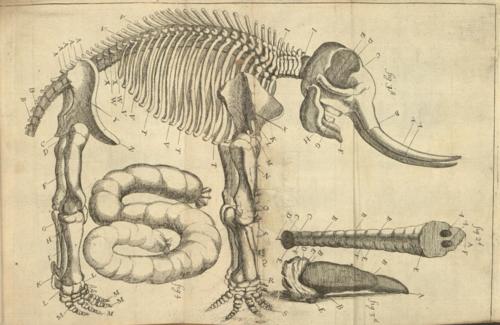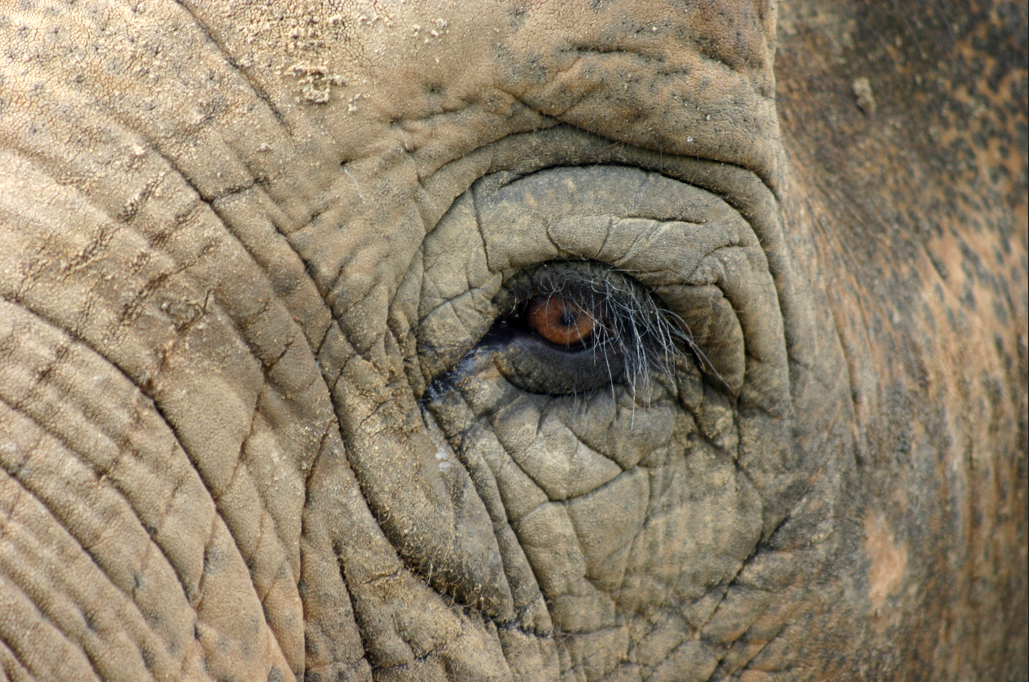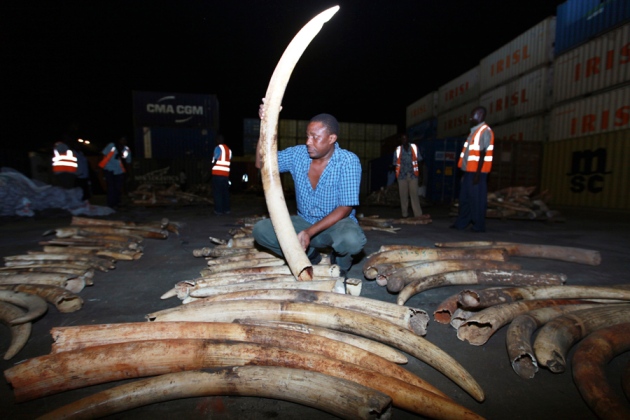It has been argued that not only are elephants aware that they will die (an awareness very few creatures possess), but that they actually have and practice death rituals.
Cynthia Moss has spent over 30 years researching herds of African elephants in Amboseli National Park in Kenya, and has observed this process firsthand. If a member of the herd dies, the other elephants will first attempt to revive the dead elephant, pushing, prodding, poking. If that is unsuccessful, they will place dirt and soil over the body. Some members will leave to bring back branches, leaves, and fronds to cover the carcass. Herds have been observed to stand a vigil for two days, leaving only briefly to eat or drink. Oftentimes the elephant closest to the one who has perished- a mother perhaps, or a young child- will linger even after the others members of the herd have left.
The way that elephants care for their dead is not a totally new phenomenon, discovered only in the new millennium by scientists and experiments and testable data. It is a simple, observable trait that has existed for many thousands of years. Aristotle himself noted how the elephant was the most intelligent of all animals, and the Roman author Aelian wrote in early 200 AD about elephants throwing branches and dust on the carcasses of other elephants. In 1607, Edward Topsell wrote in his Historie of the Foure-Footed Beasts (trans. History of the Four-Footed Beasts, in case Renaissance English is not your strong point), that he could not:
“omit their care, to bury and cover the dead carcasses of their companions, or any others of their kind; for finding them dead they pass not by them till they have lamented in their common misery, by casting dust and earth on them, and also green boughs, in token of sacrifice.”
Elephants have even been reported to cover dead humans -or severely freaked out live humans playing dead- with branches, as they would a deceased family member of their own species. Which is more than we can say that humans do for elephants, who through rampant poaching, are slaughtered for their expensive ivory tusks and left to rot in the African sun.
Beyond the burial of a recently dead carcass, elephants also seem to find interest and value in the bones of other elephants. Herds will return to bones of dead elephants and gently step on them, run their trunks over them, smelling, examining. Recent experiments in Amboseli Park have found that elephants have a significantly higher interest in the skulls of elephants than the skulls that just look like elephant skulls, say those of rhinos or buffaloes.
The same study also found that elephants don’t seem to have a particular attraction to a particular skull. The skulls used were those of the former matriarchs of the herd, but really, how well would you perform in a match- a- random- skull- to- your- late- mother game?
Of even greater interest to the living elephant are the ivory tusks of their fallen bretheren, which are visible throughout the elephant’s life and perhaps recognizable after death. As they say, an elephant never forgets.
Herds will even steal body parts or bones that poachers, tribesmen, or scientists have moved and return them to the place where the elephant died or bury them. Any way you look at it, they have some connection and relationship to the remains and bones of the deceased. To elephants, remains are, in a word, sacred. Elephants may not process religion or ritual in the exact way that humanity has come to define them, but there is nevertheless importance in the dead.
This past November, the US Fish and Wildlife Service put 6 tons of elephant ivory (in the form of tusks and figurines) into a rock-crushing machine. According to Nature,
“the aim was to send a message to wildlife traffickers that elephant poaching will not be tolerated. Warehouse supervisor Bernadette Atencio says that the facility has received more and more tusks from baby elephants in recent years. “That to me is the most heartbreaking,” she says. “Generations and generations of elephants are being lost.”
Before:
After:
On one hand, it is crushing (no pun intended) to see art destroyed. On the other hand, it’s important to understand that the art was created from body parts of other living, breathing, self-aware creatures who mourn their dead. I’m all for creating art from human hair, teeth, even bone in the right circumstances, but never from a human brutally slaughtered in front of their family to obtain those materials. We know elephants think like humans, and they should be respected and protected like humans.






